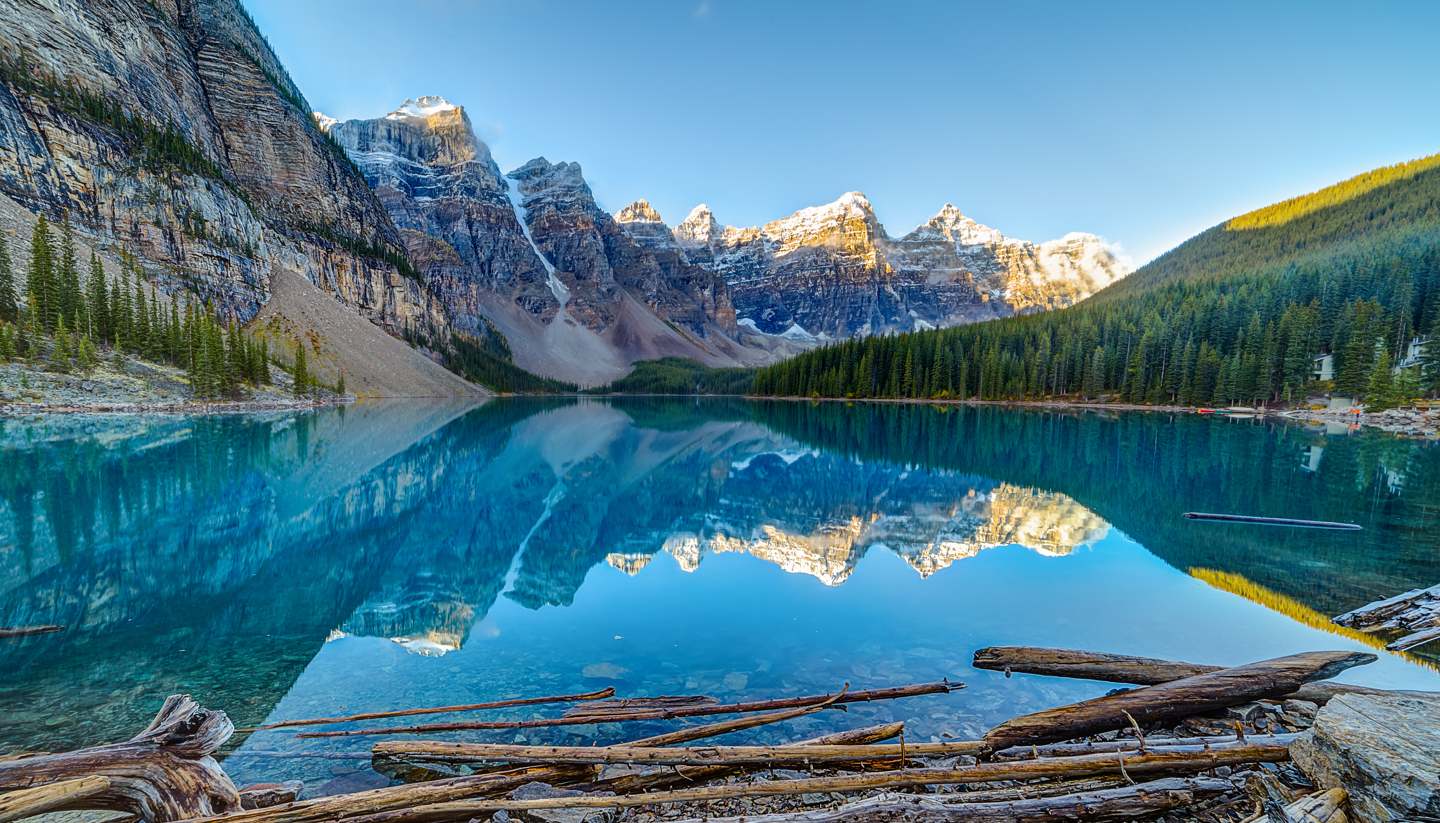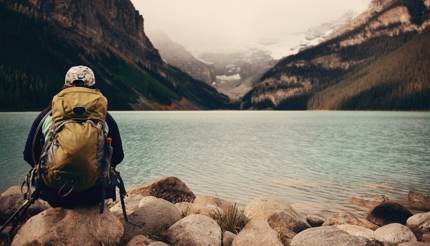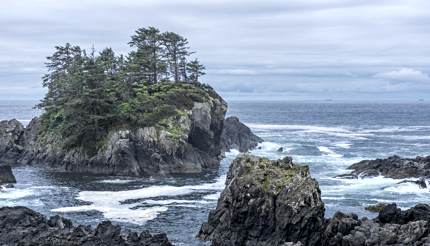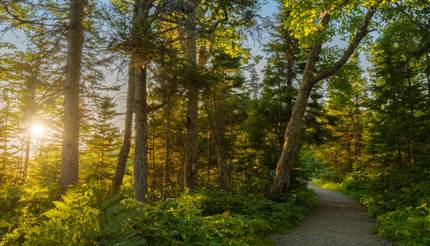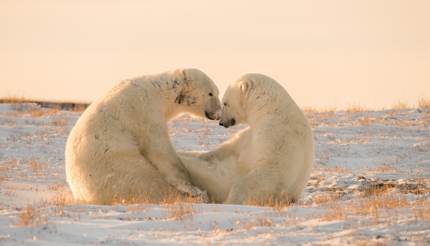Banff National Park in the Canadian Rockies is worth visiting.
Snowcapped mountain peaks, vast glaciers and alpine views that stretch for miles attract more than 3 million visitors a year.
July to September is high season, when day-trippers and families descend here in search of Banff’s great natural wonders, from the turquoise, glacier-fed waters of Lake Louise to the waterfalls of Johnston Canyon. Instead, they often find traffic jams, overflowing car parks and walking routes that are obstacles courses.
Banff National Park is big – it covers the same area as nearly 1 million football pitches – but it’s always possible to find solitude and something wilder than a Best Western hotel.
Accommodation over the summer months comes at a premium but backcountry hiking options are rich and plentiful. Some of the best overnight hikes stretch from the town of Banff to Lake Louise on either the Sawback Trail or Bow Valley Highline.
This is bear country and you pitch camp at your own risk. A safer option is picking up a Backcountry Permit in Banff and booking a night at one of the park’s more rustic public shelters, each kitted with a wood stove, outhouse and fresh water sourced from a nearby creek.
For a better overview of the terrain, the pain-free way of getting up high is on one of Banff’s chairlifts. Mount Norquay has the quietest and, at the top, Cliffhouse Bistro is a cosily old-fashioned restaurant, 7000 ft (2,130m) high, with panoramic views, and locally sourced food on the menu.
Taking a slightly more adventurous journey to the summit, the Via Ferrata (Italian for “Iron Road”) is not for the faint hearted. In a body harness and helmet, climbers are attached to a steel cable that follows one of four routes up the mountainside, over rocky outcrops and cliff edge ladders. Beginners are welcome; a fear of heights is not.
To experience an even more secluded side of the Rockies, hike the Saddleback Pass up the snow encrusted Fairview Mountain, allowing four to five hours to make the 10.5 km (6.5 mile) return journey, more if you want to stop and take in the views.
See our guide to the Alberta province for more outdoor adventure tips.
Five alternatives to Banff National Park
Yoho National Park
Banff’s eastern neighbour, Yoho has the same sheer rock walls, glaciers and waterfalls, without the hotel chains and souvenir shops of downtown Banff. Emerald Lake, green-hued and glacier-fed, is only 20 minutes’ drive from Lake Louise but sees a fraction of the crowds. Less silent is the park’s mountain goat population, best spotted clinging to the vertiginous rock faces in the Yoho Valley.
Pacific Rim National Park Reserve
Pacific Rim National Park Reserve on Canada’s West Coast has something for everyone, from sandy beaches to hot springs, rainforests to rich native cultures. Made up of three portions of coastline on Vancouver Island, the park attracts hikers, whale watchers and surf enthusiasts – all eager to make the most of its eclectic wild assets.
Ivvavik National Park
If you really want to find the true wilderness of Canada, Ivvavik National Park, on the border with Alaska, is about as remote as it gets. Timber wolves, grizzlies, musk-ox and moose all thrive here, while humans remain very much outsiders. There are no roads or designated trails in Ivvavik National Park and it receives on average just 100 visitors per year. But with an abundance of flora and fauna, the park deserves more than its one lonely review on TripAdvisor.
Cape Breton Highlands National Park
Along Canada’s most easterly shores, Cape Breton Highlands National Park is home to world-famous driving road, the Cabot Trail. Take this scenic highway through forest and along cliff-hugging shoreline but once the tank is nearing empty, forget the car and discover the real majesty of Cape Breton Highlands National Park by foot. Across land rich with deep-cut river canyons and wild flora; from coast-to-coast, there are also more than 25 hiking trails to tackle. For overnight treks, designated campsites are available and wild camping is also permitted at the Fishing Cove. Far from civilisation and phone signal, it’s a place where you’re free to enjoy the secluded beach and even take a dip in the bracing Atlantic waters.
Wapusk National Park
Unlike Cape Breton, camping is not advised on the Hudson Plains of Wapusk National Park. This is bear territory and one of largest maternity denning areas for polar bears. Their ravenous appetite and fierce temperament means unescorted travellers are not permitted in Wapusk National Park. Conditions of entry include signing up for a licensed guided trip with an armed professional.
